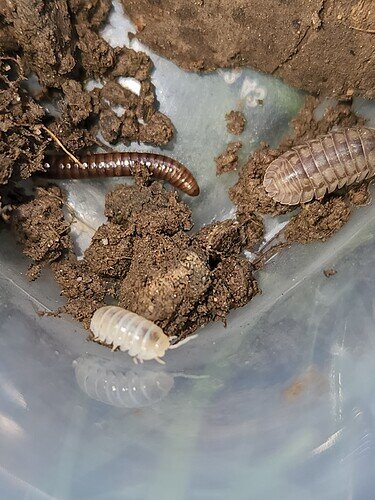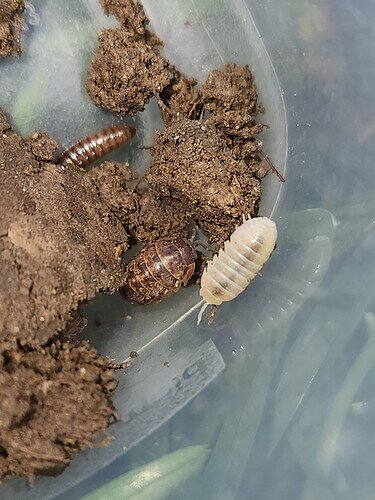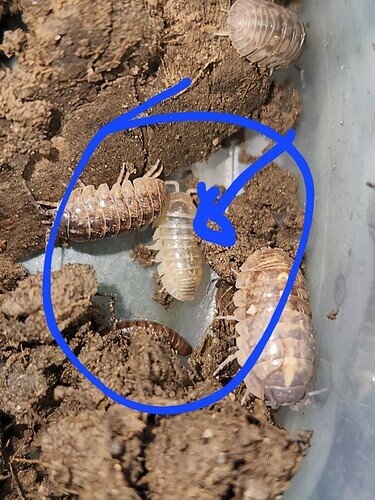I have been field collecting some naturalized isopod species near my house. After a bit of searching, I found 3 “White-out” individuals of Armadillidium vulgare. It was just a wild population, and a bit odd to find all three of them in the same spot, at the same time. To my knowledge, they are the first of their kind to be introduced to the hobby.
Although, for something that has already been introduced to the market of captive breeding and selling such as hypomelanistic/T+ Albinism/T- Albinism, etc. how would you go about correctly identifying/isolating these mutations? Would you just take a chance and add them to the existing line present in the market, or breed/market them as a different line? (Ex. A. vulgare "T+ Albino #2) To not taint the lines with a totally different mutation?
I will add pictures to represent my question, as I know sometimes my conversation in this community can be a tiny bit confusing…
I know there are an indefinite number of diverse forms of Albinism, Hypomelanism, etc. and I really don’t want to mix something I shouldn’t and market it as something that it isn’t, you know? Thanks a lot!
First ever A. vulgare “White-out”:
Unkown isopod in question (Has lighter orange/pinkish eyes and still retains yellow/green markings):




